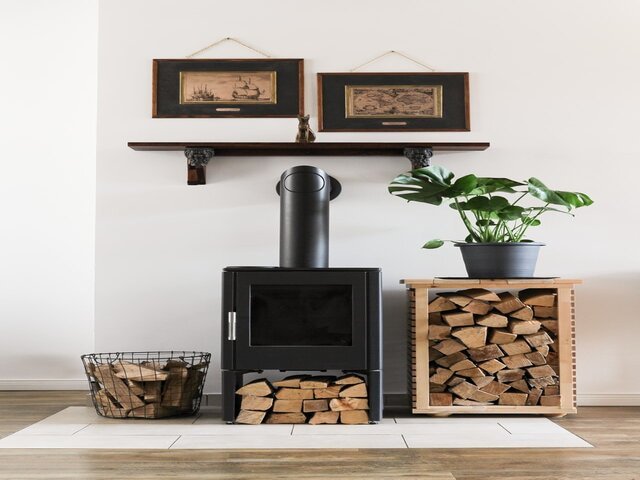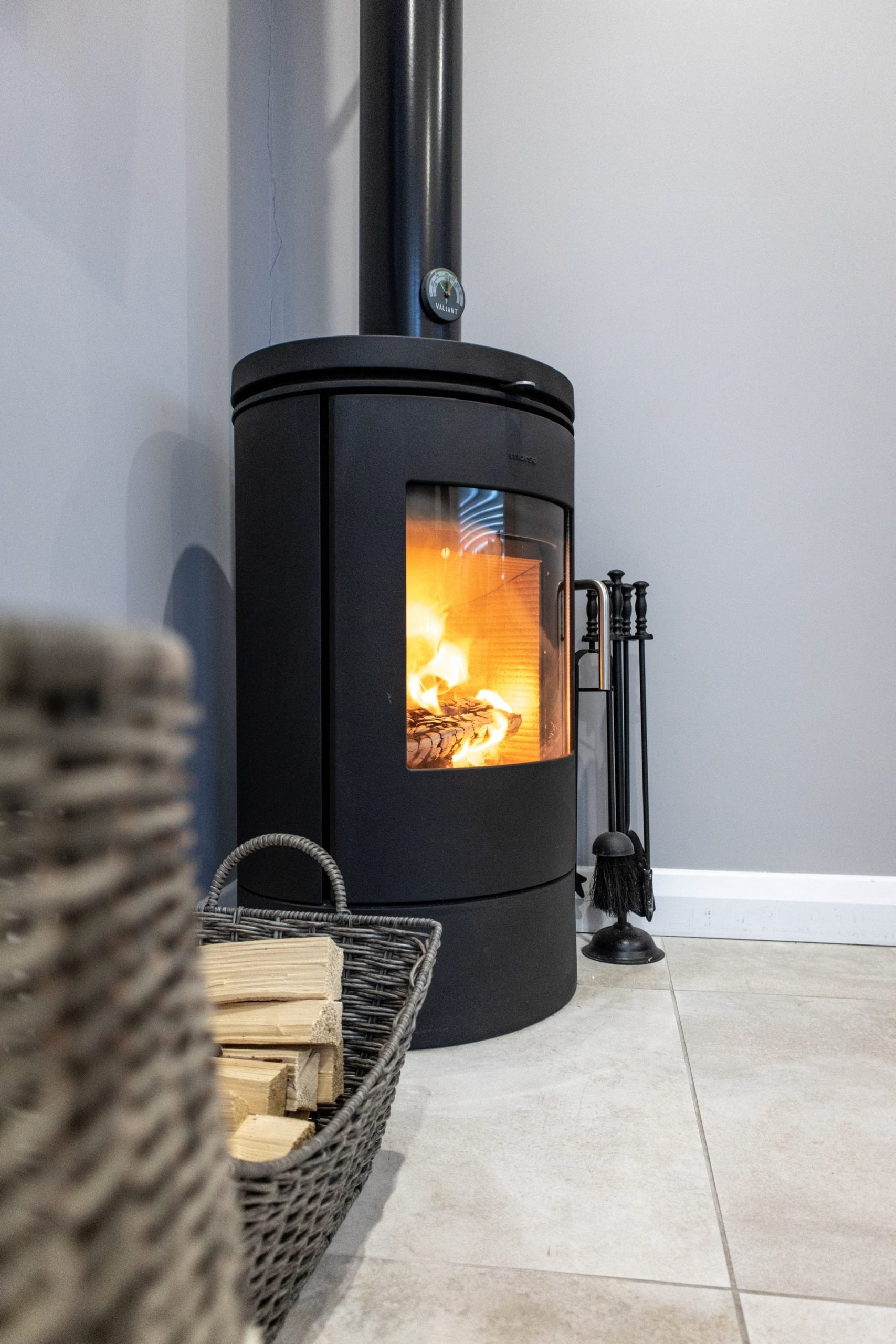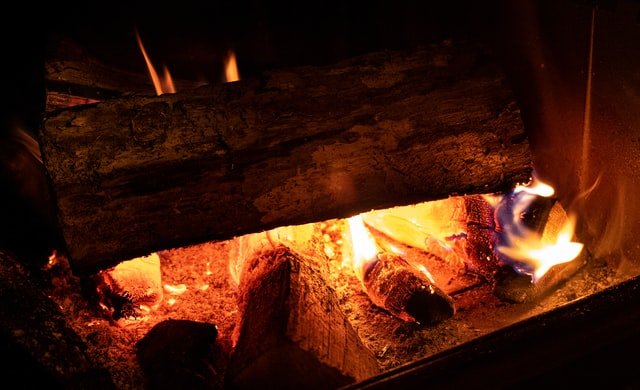Multi Fuel Stoves: What Is the Best Fuel I Should Use?
Multi fuel stoves allow you to burn several different fuels. This feature is perfect if you live in a location where firewood is inaccessible or want to switch from burning one type of fuel to another. They also won’t readily produce carbon monoxide when you’re not using wood. Most models are also highly efficient, easy to use, aesthetically pleasing, and long-lasting. However, there are some things to remember so that you can maximise their use. To make the most of them and learn about the best fuel to burn using them, use this article as your guide.
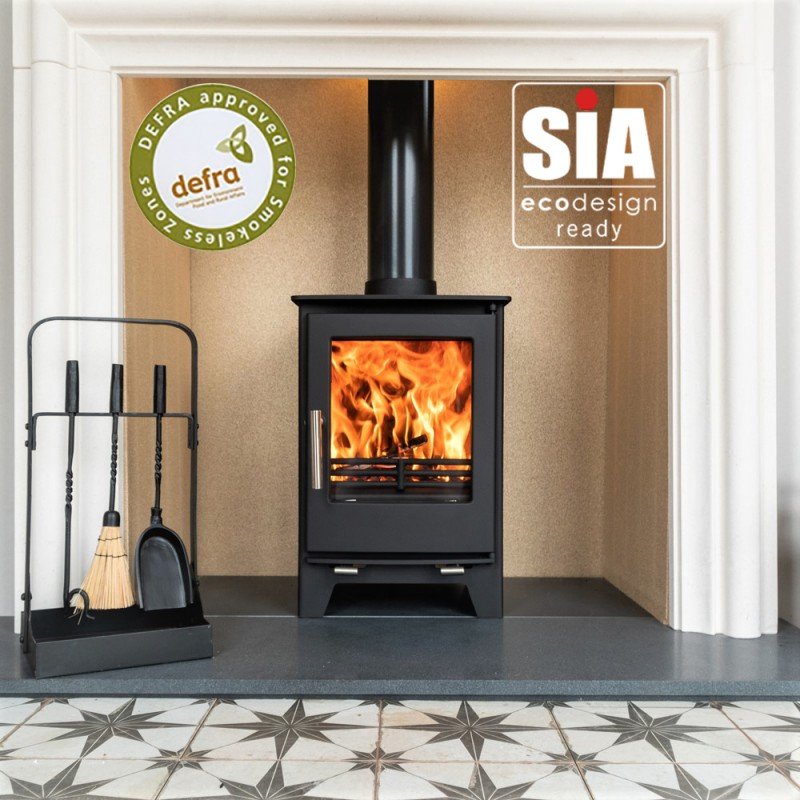
What Is the Best Fuel for My Multi Fuel Stove?
Multi fuel stoves can burn coal, smokeless fuel, and wood. Burning the best fuel for your stove is important. Note that burning both wood and coal on your stove at the same time is not advisable because it can damage your flue lining. Your stove system can erode when the sulphuric acid in coal and the high moisture levels in the wood combine.
If you want to burn coals, place them on the vented grate of your multi fuel burner. This feature will let the fire take in the air from below. Burning them or smokeless fuels is important if you live in a smoke control area. On the other hand, if you want to burn wood, use a solid base and let the logs sit on a bed of ash to take the air from above. Look for a stove with a wood-burning kit, regular log burner, or removable grate if you opt to stick to burning logs.
What Is the Best Smokeless Fuel for My Multi Fuel Stove?
If you’re wondering which smokeless fuel is best to use for your multi fuel stove, you should try anthracite or hard coal. It is characterised by high carbon content and several impurities, and it produces less dirt, creosote, pollutants, and smoke when burnt, making it clean-burning and efficient. Thus, it can be used in smoke control zones and reduces the risk of chimney fires and blockages. It is also more compact and much harder than regular house coal.
Anthracite may seem more expensive than house coal since it is less readily available, but it burns at a hotter temperature. Therefore, using it is better in the long run because you won’t need to use it as much. It can last longer than normal coal, allowing you to get more value for your money.
How Do I Burn Anthracite in My Multi Fuel Stove?
Compared to normal coal, anthracite is a little more challenging to light. It is so much denser, which means it needs a higher temperature to burn. To start, use a clean grate and dry hardwood that can produce high levels of heat. Once hot, begin adding small pieces of anthracite.
Conclusion
Using your multi fuel stove is an efficient way to keep yourself warm and attain your desired indoor temperature. To enjoy its benefits to the fullest, remember the information in this guide. Make sure also to invest in a high-quality stove and choose a trusted brand and supplier like us.
If you’re searching for the best-quality multi fuel stoves in Scotland, reach out to Stove Scotland. We specialise in the supply, installation, and maintenance of multi fuel stoves and supply top brands, like Merlin, Pod, Burley, and more. Contact us to request a quote!
Reasons for Chimney Smoke Spills and How to Prevent Them
A fireplace will make for a cozy bonding experience between you and your loved ones, especially during the cold months. However, this intimate shared experience may take a turn for the worse if your fireplace spills out smoke. This is not pleasant for anyone, least of all the homeowner. Fortunately, there are measures that can be taken to ensure that this never happens.
Smoke spills can happen in fireplaces or wood stoves that are not properly vented and maintained. To make sure that your fireplace or wood stove never leaks smoke, this article will shed some light as to the possible reasons why smoke spills happen and how they can be prevented.
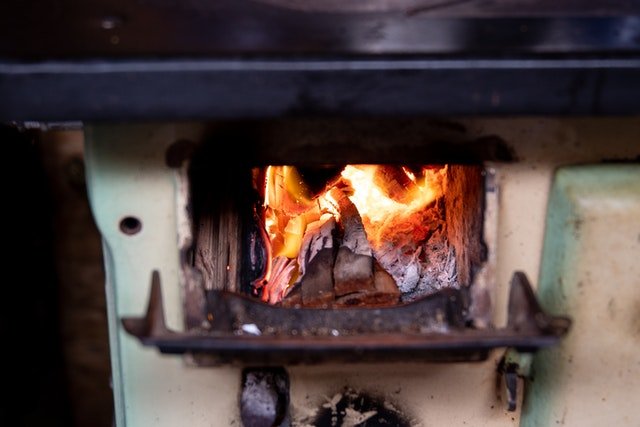
Reasons for Chimney Smoke Spills and How to Prevent Them
1 - An Obstructed Flue
There are many causes for an obstruction to form in the flue of your fireplace. You may either have a deteriorating chimney, debris from a bird’s nest, or something else standing in the way of the smoke successfully escaping through the chimney as it should.
How to Prevent This: To prevent an obstructed flue, regular maintenance of your chimney is needed. To determine if you have this problem, light a sheet of newspaper on fire and look to see if the smoke will come back down.
2 - Downdraft Pushing Smoke into the Home
This is quite self-explanatory. Wind or some other downward draft will cause the smoke to come back down the chimney and into the house.
How to Prevent This: The main reason why the smoke is not exiting your chimney as it normally should be identified first. Possible reasons may be that your chimney is too short, the negative pressure in your home, or that there are too many bends in the flue. Contacting an expert in chimney or fireplace installation will help you narrow down the possible cause.
3 - Using Wet or Unseasoned Firewood
Wet or unseasoned wood may let off steam or smoke if it is lit on fire to burn in a fireplace. The telltale sign to look out for is that the ends of the wood are cracked. Keep a watchful eye out for this when you choose wood to put into your fireplace or stove.
How to Prevent This: Make sure that you only purchase firewood from a reputable source. On top of choosing only the highest quality of wood, you should ensure that the wood is dry before lighting a fire using it. If you know the wood still has moisture in it, give it ample time to dry in the sun before using it for a fire.
4 - A Faulty Fireplace or Stove
There may be components of your fireplace or stove that have become under par because of lack of proper maintenance. If you own an older house try to recall when the last time was when you had your fireplace looked at and maintained by a professional.
How to Prevent This: Make sure to have your fireplace or wood-burning stove checked at least once a year before the winter months roll in.
Conclusion
If you notice that your fireplace or wood-burning stove is susceptible to leaking smoke, it is a good idea to have these issues fixed before the cold sets in. Performing regular maintenance on your fireplace, chimney, and wood stove will also be invaluable, particularly before the cold winter months arrive.
However, if you are in the process of building a new home or renovating your current home to include a fireplace or wood-burning stove, the best prevention method is to ensure that all the components and parts work as they should.
Should you have the need for fireplace or stove installation, contact Multi-Fuel & Wood Burning Stoves in West Lothian! We are market experts with a comprehensive knowledge of stoves and fires, we will work with you to ensure that your stove will perfectly fit the style and dimensions of your room. We supply top brands such as Merlin, Aduro, Pod, Askgard, Termatec, and Burley and are confident that we can find the perfect match for you. Don’t have a Chimney? That’s not a problem – we can fit your stove anywhere! Call us today and get your home a brand new fireplace!
How Safe is It to Leave Ash in a Wood Burning Stove?
If you are looking for an efficient way to warm a place up, wood stoves are a great choice. They can radiate heat in all directions in a quick manner. Moreover, the use of oil and LPG can be expensive, so burning wood provides you with the benefit of reduced heating bills. However, choosing wood-burning stoves would only be advantageous if you know the right way to use and maintain them properly.
A critical task in the ownership and maintenance of a wood-burning stove is regular cleaning, which includes removing layers of ash from time to time. If this all sounds new to you, we will tell you everything you need to know about the wood-burning stove and the ashes it requires to function well.

How Much Ash Does a Wood-Burning Stove Need?
You might have heard people recommending you clean out your wood-burning stove entirely before you start a new burn. However, most wood-burning stove suppliers suggest otherwise. They advise you to leave a specific depth of ash—around 25mm or one inch should be enough—into your stove before starting another fire.
The remaining ashes help the wood burn faster. The ashes have properties that allow them to enclose the fire's warmth and reflect it into the wood, resulting in a faster burning process. The ashes also act as the stove's secondary combustion chamber. Even if the fire subsides, it can still trap heat for many hours. At the same time, the burning process would be much cleaner. Your wood would be used efficiently, and the air within the stove door would stay clean.
Moreover, if you keep cleaning your wood-burning stove, your stove may get permanent damage to its metal base, resulting in a warped or cracked bottom. Keeping enough layers of ash would prolong its life.
You have to keep in mind, though, that a thick layer of ashes is not recommended. If there is too much ash in your stove, it can block the airflow from the vents. The ashes might also take up space that is supposedly for the wood.
The Ideal Timing for Removing Ash
Indeed, a layer of ash is needed to keep your stove running efficiently. Nonetheless, it does not mean that you should keep the old ashes and never get rid of them. Since the burning of wood would eventually lead to more ash, you might get an unwanted buildup. It would be best if you let go of the overused ones and make room for newer ash.
The frequency would depend on how often you use your wood-burning stove. The more you use it, the more ashes you would collect. Make sure you follow the recommended depth of ash needed and stay consistent with it.
Important note: ashes have many uses. Before fully letting them go, you can also use them as fertiliser for your garden. They contain calcium, potassium, magnesium, and phosphorus that promotes growth in plants.
Conclusion
Keeping a layer of ash in your wood-burning stove can be beneficial for your equipment and household. Aside from helping with insulation and easier wood-burning, it also keeps your investment protected from damage. If you have a wood stove at home or decide to get one now, keep this advice in mind to prolong your wood-burning stove's life.
Should you decide to purchase a wood stove in Scotland, make sure to only get from a reliable supplier. Stove Scotland can supply, install, and maintain wood-burning stoves. Contact us today to learn about your options.
4 Key Factors to Consider When Looking for a Wood Stove
There's no denying the importance of a wood stove for your home. This heating appliance is designed to warm your space by burning timber as its fuel. When you light the wood in your stove, fire is produced, and it heats up the air in your room to make you comfortable.
There are various models of wood-burning stoves readily available in today’s market, and they come in different shapes, sizes, materials, colours, and designs. Because of this, it can be a bit confusing to find the right appliance best suited for your home and family.
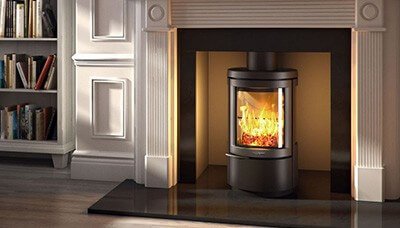
Fret not, as we've rounded up five key factors that you must consider when looking for a wood stove for your home:
1. Stove type
Before you begin your search, you must first look at the two primary types of stove to see what option to choose. Take note of the following:
- Wood-burning: This heating unit is a stove that burns only wood and no other fuels. For this stove, you may use wood materials like logs, pellets, or chips. You also have the option to choose between a log burner and a pellet stove.
- Multi-fuel stove: This heating unit is known as a mineral-fuel stove because it doesn't only rely on pieces of wood for fuel. Because of this, it can burn coals and smokeless fuels to warm your home space.
If you're choosing between the two, it all boils down to your family's needs, home type, and the fuel available in your area.
2. Installation
After choosing the type of stove you want, you must determine how you want to install it in your home. Here are two installation options you can go for:
- Freestanding: This heating unit can stand alone. All it takes is for you to purchase a model and position it somewhere in your house as needed.
- Insert: This heating unit is similar to the freestanding stove, but the difference lies in how this stove insert is required to be located within your existing fireplace.
Here at Stove Scotland, we provide stove supply and perform stove installation and maintenance services. We also offer supply and installation packages to meet your requirements and budget!
3. Materials
As far as the stove materials are concerned, you have the following popular options to choose from: steel or cast iron. Both materials are great conductors of heat, but they differ in the way they release heat. As such, be sure to consider the details below:
- Steel: This stove releases the heat more quickly into your room but doesn't retain the heat for so long.
- Cast iron: This stove takes longer to heat up, but the heat stays for a much longer time in your room.
4. Combustion
A wood-burning stove won't work properly without combustion. Combustion is simply the scientific term for burning, which occurs when a substance reacts with the air's oxygen. Here are two types of combustion you may want to consider in a wood stove:
- Catalytic: This wood stove with catalytic combustion usually has a more efficient and cleaner wood-burning than its counterpart. Yet, it is considered a high-end stove with an added level of complexity.
- Non-catalytic: This wood stove still provides a high efficiency and heat output through a secondary combustion process. Know that most of the wood stoves in the market are non-catalytic.
Conclusion
A wood-burning stove is indeed an excellent investment for your home. However, you will want to make sure that you're choosing the right appliance by considering its type, installation, materials, and combustion. With all these in mind, you'll be able to make the right stove selection and purchase decision!
We have a wide variety of top stove brands in store and provide installation and maintenance services with quality and customer satisfaction. If you're looking for a wood stove in Scotland, get in touch with us today for a free quote!
3 Tips to Enhance Safe and Efficient Use of Your Stove
While log burners have been a staple in many homes for warmth and cooking, the various concerns that have arisen from its use have made it seem like the government is on its toes to get it banned. Fortunately, this is not the case. They have introduced a program known as the "Clean Air Strategy" to help guarantee safe and efficient use of these log burners.
That said, you do not have to wait for the strategy to reach you to start using your log burner safely and efficiently. You can do many things to make a difference, and in this article, we will list some of the things you can do!
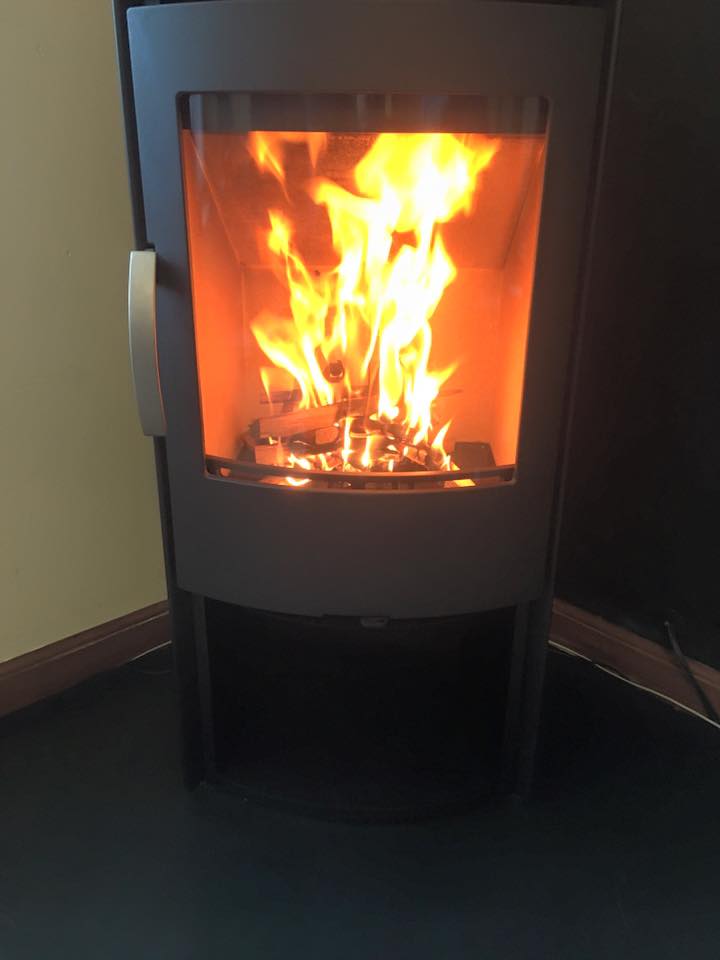
1. Don't let it smoke
When you burn wood, you create smoke. If you don’t tweak your settings, you might produce excess smoke. This excess smoke can lead to soot build-up in the chimney, causing emissions to seep into the house.
To avoid this problem, there are a few things you can do. For instance, you can use the air controls to ensure the burner gets enough oxygen to create more flames and less smoke. Also, keeping the fire constant will ensure that the flue maintains a specific temperature. This reduces the risk of deadly carbon monoxide seeping back into the home.
If you have the money, we recommend investing in DEFRA-approved stoves or eco-design ready stoves. They are at least 60% efficient, maximising your investment and reducing the risk of potential harm.
2. Only use dry wood
Certain types of fuel tend to produce much more smoke than others. For example, wet logs and house coal are known to create plenty of emissions. Dry logs and low-sulfur fuels produce much less smoke.
Be sure to pick fuel that guarantees much fewer emissions, such as dry wood. Note that dry wood may still contain some moisture, but anything less than 20% moisture content is a solid choice. These qualities ensure that the wood burns effectively and limit the amount of smoke and soot produced. If you have access to wood labelled with "ready to burn" logos on it, they already fall under the criteria. This means all you need to do is buy them and use them! If you want to use your wood, then you will need to season the wood. Store them in a dry place for at least a year or two before using them.
3. Avoid fuel with smoke
Other than wood, there are other types of fuel, such as coal. Unfortunately, not all coal is made equal, and some are much safer than others.
For the best coal, look for anthracite coals and other smokeless types. These coals come with a sulfur content of no more than 2% to ensure that smoke and sulphur levels are minimised. Unlike house coal, they do not produce as much ash either, necessitating less cleaning on your end.
Conclusion
By applying one or more of the above tips, you ensure the safe and efficient use of your log burners. With less dangerous emissions coming out of your stove and more heat being produced, you can sit back and relax even in the coldest winters knowing you are in the safety of your home without any dangers from the stove itself.
That said, if you are working with old stoves, we highly recommend investing in brand-new ones. Stoves today are much more efficient and safer than stoves of the past, so go ahead and pick one! They will help you save money in the long run and ensure that your home remains the haven it should be.
Stove Scotland are experts of stoves and fires, offering multi-fuel and log burning stoves in West Lothian. If you are looking to purchase the best wood stoves in Scotland, reach out to us today and get your free quote!
Choosing the Best Heating Stove for Your Home
The United Kingdom is known for its dreary, cold weather, with sparse sunny days. While summers can be quite warm, springtime, fall, and winter can be brutal for people with sharp drops in temperatures. Being extremely cold at home makes it more difficult to perform your daily activities, especially with the harsh weather in the northern United Kingdom. Many people can benefit from a stove installation, which brings warmth to the home’s inhabitants.
A wood stove in Scotland is one way to remove the blistering cold temperatures from inside the typical home. These traditionally-fueled units are a great way to deal with times where electricity might be unavailable, which provides a pleasant atmosphere no matter what goes on. However, these products can be taken a step further in the forms of multi-fuel stoves, which can use various heated materials to achieve warmth.

Choosing the Best Heating Stove for Your Home
All About Wood-Burning Stoves
Wood-burning stoves operate using a fuel source of wood-origin. These units can produce heat energy through burning wood logs, pellets, or wood chips that can be bought from local hardware stores or other dealers. The installation of these products is typically used as a standalone heater in regularly-sized rooms. They have a fixed grate that prevents embers from escaping, with a flat base that allows the fuel source’s laying. Ash will form as the natural material burns, which will require clearing and replacement as time progresses. Leaving some ash will let the logs combust better, giving off better heat during the winter.
The benefits of using a wood stove in Scotland is that it is cheap to run and is a very useful and reliable heat source. If there are ever instances where the power cuts out and electricity is unavailable, a wood stove installation can provide heat without a power source. If you stock up on wood chips and logs, this can give your home practically infinite energy. However, be sure the materials you’re burning are safe and of high-quality, as these can be risky for your safety if they produce too many embers and intense heat.
All About Multi-Fuel Stoves
Multi-fuel stoves are often seen as much better than a wood-burning one because they can burn more fuel sources. You’re not only limited to wood products, but you can also use coal, peat, turf bricks, and other smokeless fuels. However, you might want to consider how you’ll have to properly run the system out of your house, as burning things like coal can be harmful to your family’s health.
The advantages of multi-fuel stoves are that they have higher efficiency when producing heat depending on the fuel source, and the fuel sources are conveniently available. You’re not limited to cutting trees and requiring constant wood sources for these to run, as you can use coal, peat, and other kinds of flammable materials that are confirmed compatible with the unit.
What Do You Choose?
If you want a cheaper option that is easier to operate and run, then wood-burning stoves are great options because of wood’s availability almost everywhere you look. They are excellent survival stoves and are quickly installed, making them cost-effective for those on a budget but need a space heater.
However, if you want a more flexible heating system with plenty of fuel sources available, a multi-fuel stove is an excellent choice for people who want to use less wood. It also creates the same heat and comfort level compared to wood stoves, which is also a viable option that gives a wider range of available materials to burn.
Conclusion
Having a wood stove in Scotland is a great way to keep warm during blistering cold winters, and this is why people invest heavily in suitable heating technologies. This primitive device will never fail to keep you warm, whether electricity fails or not.
Stove Scotland is your best place to get either a wood stove or a multi-fuel variant in Scotland and the United Kingdom. There are different models available for all types of homes and rooms, making them the preferred choice of various Scottish people. View our catalogue to find out more about having a stove in your home today!
The Wonders of a Woodstove Amid Lockdown: Things You Can Do
Just when you thought the whole quarantine thing is over, you are forced to be on lockdown again, specifically here in the UK. Instead of dwelling on the negativity that it brings, it’s time you practise to look at the brighter side of things. The weather is colder and wetter, while afternoons are darker, but it’s not so bad if you have a woodstove.
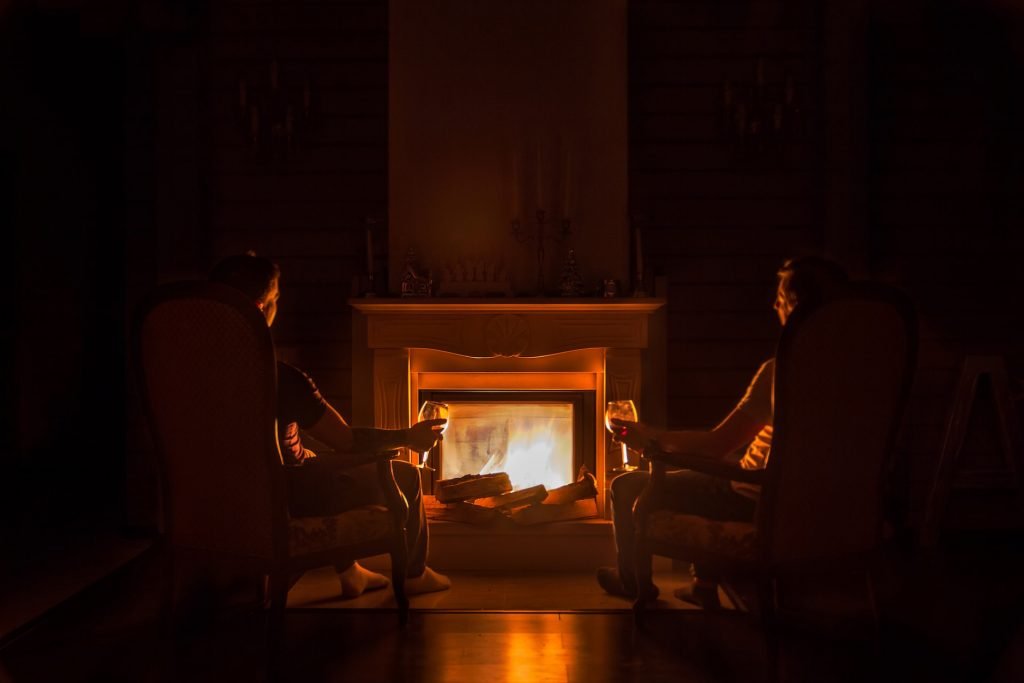
You can try a lot of things with your woodstove that will make the lockdown phase more bearable.
Flame Gazing
Did you know that watching and hearing fire can have a significant decrease in blood pressure? Even though you don’t have a BP problem when it’s down, it only means one thing—you’re okay and not under stress.
So yes, flame gazing is a thing, especially at times when cabin fever is starting to set in again. Fire up your woodstove and just gaze at it. As you watch the flames, listen to the wood crackle so you can get more benefits from it.
Get Into Board Games
The wonders of board games are undefeated. With board games, you get more social interaction and more fun with your loved ones. Play some board games in front of the woodstove, and you’ll get warmth and fun at the same time. It’s one of the best things you can do with your loved ones to make the most out of this lockdown period.
Have Dinner in Front of the Woodstove
Couples, families, etc., have become more creative in eating meals during this lockdown period. Put your woodstove to good use; some foods are suited perfectly to enjoy in front of the stove. Besides that, why don’t you set up a table and a few chairs by the fire and prepare a delicious meal? It may sound like a lot of work, but trust us, it’s going to be worth it in the end.
The idea here is to set a full restaurant ambience, and once the table is set and the food ready, you can throw a log on the fire, dim the lights a little and enjoy a sumptuous meal with the people you love.
Do Hot Yoga
It’s essential to stay active, even when you’re forced to stay inside your home. Why don’t you get into yoga in front of your wood stove? Hot yoga is performed in a room heated to more than 40 degrees celsius, which is also known to burn more calories. Additionally, it can increase flexibility and ease depression. So, get sweaty in front of the woodstove! You will definitely feel a whole lot better after a yoga session.
Conclusion
With so many things you can do with your woodstove, the lockdown period won’t be that bad after all. Do these things in front of your woodstove and make the most out of it. For sure, when all of this is over, you will look back at this time and be glad that you spent it the way you did.
If you don’t have a woodstove yet, it’s time you do! For the best stove installers in Edinburgh, contact us today here at Stove Scotland.
Wood-Burning vs. Multi-Fuel Stoves: Which to Choose?
Stoves are vital heating appliances designed to burn fuels to heat your home. Over the past years, many stove models have entered the market based on shapes and sizes, colours and designs, as well as uses and applications.
When it comes to stoves for house heating, you typically have the option to choose between a wood-burning and a multi-fuel stove. As the names would suggest, the former burns wood while the latter makes use of various fuels. But which is the better option for you?
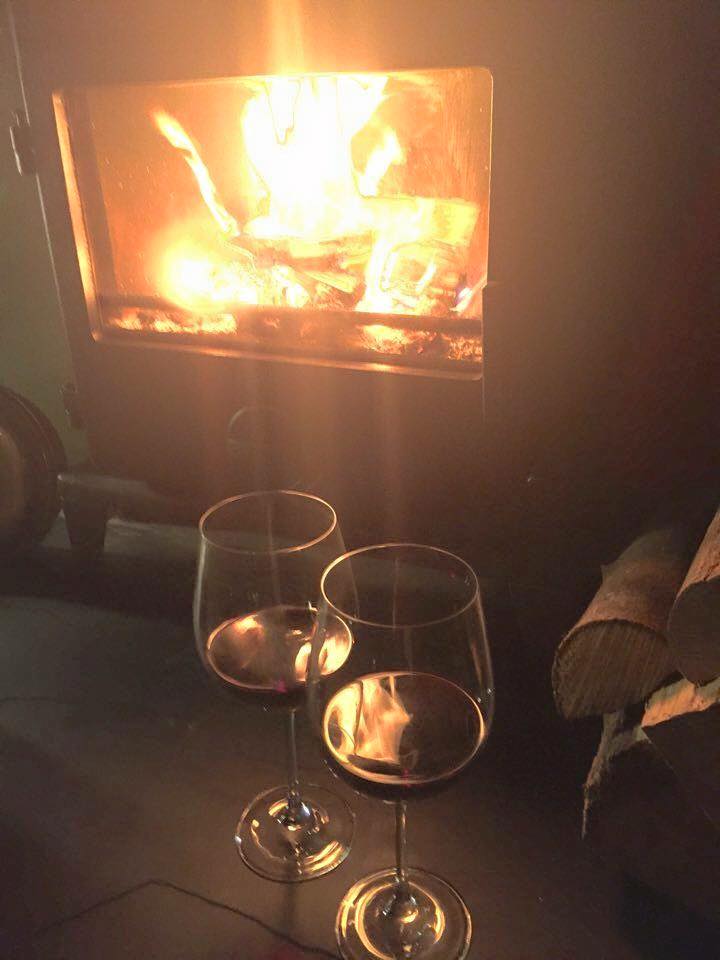
In this article, we'll cover the differences between a wood-burning and multi-fuel stove so that you will know which option to choose:
Wood-burning stove vs multi-fuel stove
Let's first take a look at the major difference between the two by definition, as follows:
- Wood-burning stove: It is a heating unit that burns no other fuels but wood. This means that it solely runs on timber materials like logs, pellets, or chips. It may either be a log burner or a pellet stove, depending on what works for your home. But for the most part, it usually is a stand-alone heater for one room or a large one that can heat the entire house.
- Multi-fuel stove: Also known as a mineral-fuel stove, this heating appliance doesn't only burn wood but also coals and smokeless fuels—hence, the name! It typically consists of a grate to burn on the fire, a removable ash pan beneath the firebox, and a primary air vent located on the front of the appliance.
With that, the difference between the two all boils down to the type of fuel they can burn.
How the fuels are burned
Now, let's delve into how both types of stoves burn fuels to warm your space. Take note of the following:
- Wood-burning stove: This appliance allows your timber pieces to sit on a bed of ash called a firebox that burns the fuel. Pellet stoves are popular among households used to burn pellets to heat the entire house, whereas the log burners use a low-carbon fuel to warm a room.
- Multi-fuel stove: This appliance works by consisting of a grate for the fuel to sit on, making it ideal for smokeless coals and mineral fuels—not only woods. It allows air to reach these fuels from below for them to burn efficiently and effectively.
Here at Stove Scotland, we offer both multi-fuel stoves and wood stoves in Scotland. We make sure that every stove we sell is of the highest quality coming from trusted brands!
The advantages of both stove types
With the differences that the two stove types have, they each offer varying benefits as well:
Wood-burning stoves
- They are the most affordable heating appliance.
- They use the cleanest materials, which is wood.
- They are flexible and can also be converted into a multi-fuel stove.
Multi-fuel stoves
- They give you the options to choose the types of fuels you prefer to use.
- They won't produce carbon monoxide when not using wood for burning.
- They are slightly less of a fire risk than wood stoves.
- They generally do not need to be placed outdoors.
Conclusion
Stoves are vital heating appliances at home because they warm your space and keep your family comfortable during the cold months. As each stove type has its distinct features and uses, be sure to weigh in its pros and cons, assess your home needs, and see what works for you and your family. With all the pieces of information above, you can decide what best suits your household needs, whether a wood-burning or a multi-fuel stove!
Are you weighing your options between a multi-fuel stove and a wood stove in Scotland? Let our experts help you decide! With a wide variety of top brands, we provide stove installation and maintenance with quality service and excellent customer satisfaction. Get in touch with us today for a free quote!
6 Common Wood Burner Myths, Debunked and Explained
Aside from being a truly sustainable option for heating the home, wood burners provide a warm and cosy feel to any living space. However, many remain misinformed about facts surrounding the use and effects of wood burners.
This post serves as a compilation of common misconceptions about the use of wood burners. Hopefully, it will shed some much-needed light on the matter.

Myth #1: Burning Wood Harms the Environment
Wood burners are only capable of emitting the amount of carbon that a tree absorbed in its lifetime. This means that as long as you choose the right kind of wood, it is unlikely to damage the environment. It is definitely less harmful than burning fossil fuels. In fact, modern wood burners have new technologies that reduce emissions, including clean-burn systems. Fully seasoned logs must be used between 25% to 30% moisture content. This allows for clean burning results.
While wood burners are deemed safe for the environment, it is important to note that burning any fuel emits CO. If you wish to install a wooden stove, installing a carbon monoxide detector is a regulation you need to follow.
Myth #2: Wood Burners Cannot Be Used in Smoke-Free Spaces
As mentioned above, modern wood burners are equipped with clean-burn technology. This enables a higher output of heat mixed with low emissions. This means that wood burners can be used within smoke-controlled areas. Of course, this is all dependent on fuel selection. A good example of this is the Worcester Bosch Greenstyle Stove.
Myth #3: Anyone Can Fit a Wood Burner
No. Only HETAS-trained professionals should fit your wood burner, as any inexperienced personnel can pose danger to you and the members of your home. There is an increased risk of harmful leaks, and burners are never suitable for DIY installation.
It is always recommended to contact professional stove fitters in Scotland, to ensure that you are getting a fully licensed and qualified expert to do the installation.
Myth #4: An Open Fire Can Provide More Heat Than a Burner
It doesn’t. An open fire loses four-fifths of its heat as it escapes through the chimney. A wood burner only loses between 15%-30% when the door is closed. It is also important to note that a wood burner can heat the whole house. The combination of a back boiler installation with central heating could provide warmth in all rooms of your home.
Myth #5: Wood Burners Are Hard to Clean and Maintain
There are wood delivery services that can bring wood to your home. The clean-burn technology enables wood stoves to remain cleaner than before as it blows hot air downwards. This avoids any unnecessary build-up within the unit.
Myth #6: You Always Have to Clean a Wood Burner Before Putting in New Wood
This is incorrect. Wood burner installers will suggest that it is always better to have a layer of ash if you wish to start a new fire. The existing layer of ash holds fire and prolongs its life.
Conclusion
While there will always be misconceptions about wood burners, they provide nothing but benefits to any household. They give warmth and act as a better option for heating. It also adds value to your home.
Looking for experienced and qualified stove fitters in Scotland? Stove Scotland offers wood-burning stove installation services in Edinburgh and the West Lothian area. We combine our comprehensive knowledge of stoves and fires with feasible solutions for your home to fit your ideal style and dimensions.
Things to Know Before Buying a Wood Burning Stove: Our Guide
A wood-burning stove can be a valuable asset to your household, especially if you live somewhere with harsh winters. You may also be considering buying it for its aesthetic value since modern-day multi-fuel stoves have a stunning modern look. Whatever your reasons for purchasing a wood stove, you have to be mindful of the different considerations to ensure you can use it effectively.
This article will discuss the three main things you must look into before buying your wood stove. Take this as an opportunity to make sure that you make well-informed purchasing decisions for your household. This way, you can better appreciate the stove for its functionality and style as you look at your home as a long-term investment.

Ensure your house is well-insulated and has enough space for stove fuel
Before thinking about having proper heating, check if your living space is designed to keep away the cold. For instance, you may have little-to-no insulation, which can affect your wood stove’s effectiveness. Like getting an HVAC system, you need to have well-insulated rooms since you want efficient air conditioning and heating capabilities.
Another thing to remember about wood stoves is their fuel sources, like logs and oil. Thankfully, there are now multi-fuel stoves that can use different types of heat sources, but you have to be careful about storage space so you can keep your fuel’s potency. Address these concerns before having your wood stove installed for hassle-free usage.
Get to know the building regulations and requirements
Heat-burning stoves can raise environmental concerns and require compliance with building regulations. For instance, there may be a recommended distance between the stove and combustibles, and you may be living in a smoke-controlled area. That’s why it’s important to discuss the details with your stove provider before investing in a unit.
You may also want to check what the Department for Environment, Food, and Rural Affairs has to say about your wood stove.
Know the required heating output in your space
It’s no surprise that wood stoves are made to produce heat, letting you mitigate the harsh, frigid temperatures. However, you may not get the most out of your unit if you didn’t look into the heating output. It’s the heat rate you need to generate for effective heating against cold weather.
The general ratio you need to hit is one kilowatt of heat output per 14 cubic metres of room space. You also want your stove to produce enough heat to keep the room at 21 degree Celsius when the temperature outdoors is at one degrees Celsius.
Due to the technical nature of determining the ideal heating output, acquire a wood stove from a provider with stove installers for your convenience. They can assess your room’s capacity for heat control. This way, you can efficiently use your stove without worrying about wasted resources and ineffective temperature control.
Conclusion
Getting a wood stove can be a fulfilling investment in your living space. Now, you also have a better understanding of what you need to know before you get one. All you have to do is find the perfect supplier to provide you with a high-quality one and guide you through the process. Remember all the previously mentioned facts and get access to the heat you need for those long, cold winters!
Are you looking for the best wood stove in Scotland and the proper guidance to get started? We at Stove Scotland can provide you with that. We are your dedicated team of stove experts, offering you the practical knowledge, installation, and maintenance you need to look after your unit. Claim your free quote from us today!

